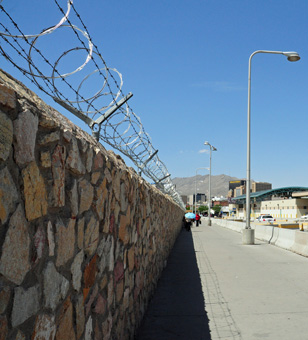With unauthorized immigrants crossing illegally into Texas and fears that the border region was growing out of control, the government responded by militarizing the area. The year was 1827 – not 2012. The unauthorized immigrants were from the United States, not Mexico. The nervous government was that of Mexico, not the United States.
In 1827, East Texas, as it is known now, was a backward frontier area of the Mexican federation, the northeastern corner of the state of Coahuila y Tejas. Three groups warily and sometimes violently confronted each other over who was to prevail: Indians, the original inhabitants, who, along with migrant Indians being pushed out of the United States, sought to preserve their hunting areas; Mexicans, who wished to farm and ranch; and Anglo Americans, who also wished to farm and ranch, and who, most importantly, carried with them the slave system of the South.
Unbeknownst to them at the time, it was in the struggle among these three groups that led to the roots of the United States becoming an imperial power taking shape. In short order, the Anglo Americans would triumph – first in the 1836 Texas War of Independence, and then in the 1846-1848 war with Mexico, confirming the Mexican government’s worst fears about the growing danger in Texas. In 1848, with their troops occupying Mexico City, the Americans would force Mexico to cede over half its national territory for some twenty million dollars. The sold area included what would later become the western half of Texas, New Mexico, Arizona, California, Nevada, Colorado, Utah and part of Oklahoma – in short, the contemporary Southwest of the United States.
Out of the Southwest in the second half of the 19th century would come half of the United States’ total mineral wealth, including gold, copper and oil; the ranching industry; and California, which includes what is perhaps the richest agricultural area in the world. It is doubtful that without this windfall bonanza of wealth the United States would have been propelled in fifty short years to the first rank of world powers. It is also doubtful that if the area had remained a part of Mexico that the severe first world/third world inequality that exists between the two most populated countries of North America would be nearly as severe as it is today.
Even in hindsight, after the facts, there are different perceptions and interpretations of the events. Controversy continues to surround the motive forces of the Texas War of Independence. On one side, American folklore has traditionally celebrated the war as a heroic attempt by frontier pioneers to break out from under the yoke of cruel Mexican oppression. The view from south of the Rio Grande (called the Rio Bravo there) is distinct, seeing the war as the first step in American expansionism which would shortly cost Mexico over half of its national territory.
Connected to these opposite claims is the interpretation of the role of slavery as a motive force. Mexico abolished slavery on September 16, 1829, the ninth anniversary of its own independence from Spain. Two months later, after a windstorm of protest from slave-owning Texas colonists, the central government allowed slavery to remain in Texas under restrictions. On April 6 the next year, the Mexican government issued the Bustamante Decree, which forbade the importation of new slaves and severely restricted new immigration from the United States. Though President Santa Anna rescinded the Bustamante Decree (or April 6th law, as it was popularly known) in 1833 after special pleading from Stephen Austin, it and the issues surrounding it contributed to the causes of the Texas War of Independence. Even before their victory in the war, the Anglo-American colonists made one of their intentions completely clear in their prospective Constitution: they explicitly legalized slavery and slave importation.
The Mexican government never recognized the independence of Texas. Throughout the rest of the 1830s and the 1840s, it planned to retake the breakaway territory, even sending troops to briefly occupy Bexar, which later became better known as San Antonio. Numbers of loyalist Mexicans, Indians and Negroes supported the Mexican efforts to retake Texas, engaging in guerrilla skirmishes that lasted throughout the years of the Republic of Texas. On July 16, 1839, as a result of their rumored collaboration with Mexico, the Cherokees under Duwali were massacred at the Battle of the Neches and their survivors driven out of Texas, some into Mexico.
Slavery accelerated in size and density in Texas. Between 1836, the year of independence, and 1840, the slave population doubled; it doubled again by 1845; and it doubled still again by 1850. In 1836, there was one black for every six whites; by 1847, it was one black for every three whites.
East Texas then, in the 1820s and 1830s, was the location of a world-historical nodal point, or crucial turning point in the development of what was to follow. It is in such nodal points of history that men and women struggle with and resolve the problems of their personal and public lives with varying degrees of consciousness of the historical issues at stake.
Texans today live with the historical consequences of those events: a still-subjugated black population; an unauthorized Mexican population of low-wage, off-the-books labor that lives in tenuous conditions in an area that was once its homeland; a dwindling Indian population; and a white population divided between ultra reactionaries, who continue to celebrate the aggressive seizing of the state and demand a wall to keep those to the south from coming back in, and others who, with varying degrees of guilt or amnesia, live their lives without actively worrying about the origins of where they live them.
YOUR HELP urgently NEEDED
We missed our July fundraiser goal and need to keep fundraising to make up the difference.
The next few months are going to be pivotal and your tax-deductible donation will go far in helping us do our work.
Please do what you can today.
